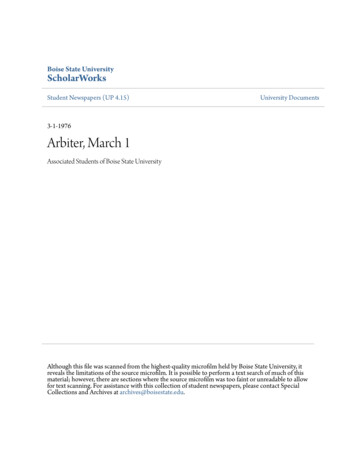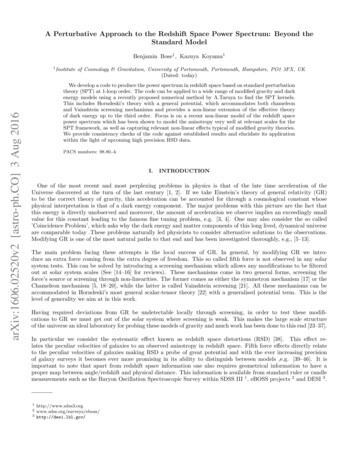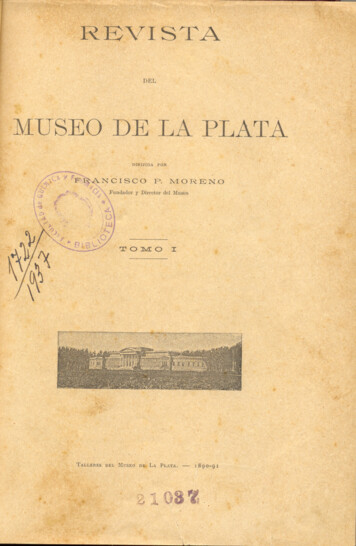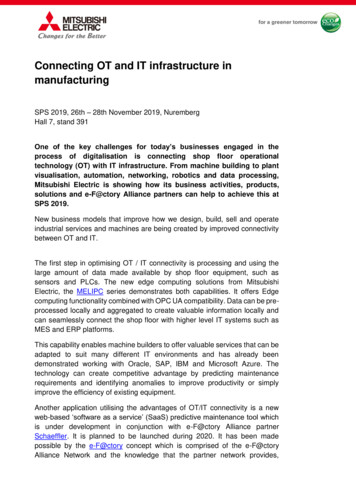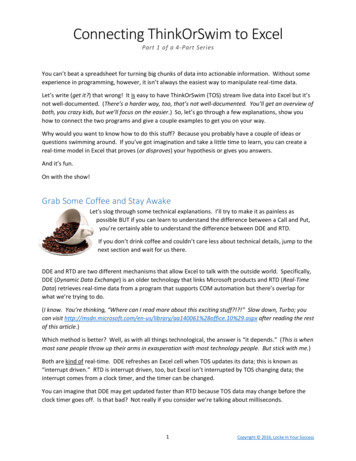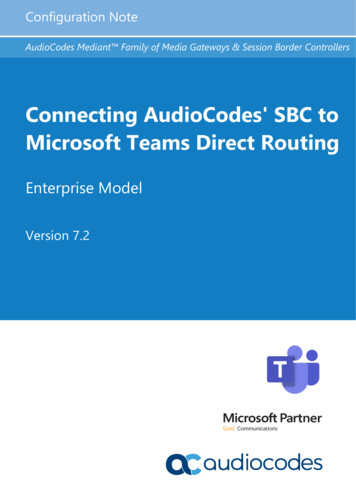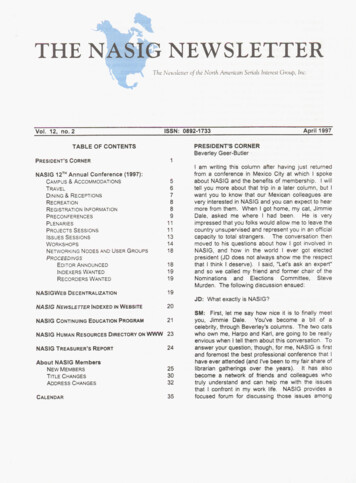
Transcription
TABLE OF CONTENTSPRESIDENT'S CORNBeverley Geer-ButlerPRESIDENT'S CORNERNASlG 12'" Annual Conference (19S7):CAMPUS & ACCOMMODATIONSDINING& RECEPTIONSREGISTRATION INFORMATIONPRECONFERENCESPROJECTS SESSIOISSUES SESSIONSWORKSHOPSNETWORKING NODES AND US5I am writing this column after having just returnedfrom a conference in Mexico City at which I spokeabout NASlG and the benefits of membership. I willtell you more about that trip in a later column, but Iwant you to know that our Mexican colleagues arevery interested in NASIG and you can expect to hearmore from them. When I got home, my cat, JimmieDale, asked me where I had been He is veryimpressed that you folks would allow me to leave thecountry unsupervised and represent you in an officialcapacity to total strangers. The conversation thenmoved to his questions about how I got involved inNASIG, and how in the world I ever got ORDERSWANTEDMurden. The following discussion ensued:ASIGWEB DECENTRALIUTI NJD: What exactly is NASIGSIG CONTINUING EDUCATION PROGRAMSIG HUMANRESOURCESDIRECTORY ONSIG TREASURER'SREPORTbout NASIG MembersNEWMEMBERSTITLECHANGESADDRESS CHANGESyou, Jimmie Dale. You've become a bit of acelebrity, through Beverley's columns. The two catswho own me, Harpo and Karl, are going to be reallyenvious when I tell them about this conversation Toanswer your question, though, for me, NASIG IS firstand foremost the best professional conference that Ihave ever attended (and I've been to my fair share oflibrarian gatherings over the years). It has alsobecome a network of friends and colleagues whotruly understand and can help me with the issuesthat I confront in my work life. NASIG provides a
others who can truly understand the complexitiesinvolved.I can quote from past president JuliiBOB:Gammon's introduction to the 1996 MembershiDShe states that "NASIG is an independentorganization promoting communication and sharingof ideas among all members of the serialsinformation chain--anyone working with or concernedabout serial publications." That is a very elegant andwell-stated way of saying that we are a group oflibrarians, publishers, subscription and systemvendors, educators, and other serialists who gathertogether once a year to work on issues, concernsand problems surrounding serials and to have areally good time away from home and cats!m.JD: This sounds interesting. I have shredded a fewmagazines in my life so does that make m% amember of the serials information chain? What isthe membership rate for cats?SM: Well, shredding magazines is the job of thepost ofice, so you may be violating union rules bydoing that. I suggest you stop. As far as themembership rate, 1'11 have to defer to Beverley. But Iknow that Harpo and Karl will be interested in heranswer, too.BOB: Next question?JD: Humph!! Ok then, how can a human get moreinvolved in NASIG?BGB: I got involved by using a method similar to theone you used to get me to adopt you: you appearedin my yard and looked pitiful and needy so that Iwould bring you in.I appeared at NASIGconferences and annoyed people until they gave mea job to do. Well. that is an exaggeration. I joinedNASIG in 1986 and I attended my first conference in1988 (Oglethorpe University). My memory is a bitf u u y but I think that the volunteer mechanism wasmore informal in the earlier years because therewere fewer members and committees. I did theusual thing: I got to know people and made sure thatI expressed my interest in serving on committees.My efforts were rewarded fairly quickly because myfirst committee assignment came in 1988 when Iwasappointed to the Nominations Committee. I also tookadvantage of opportunities to record workshops, leaddiscussions at the networking nodes, presentworkshops, and introduce speakers at theconference. In 1997, things are a bit different. Let1me illustrate with my experience appointingcommittee members for the current year.In the September 1994 issue of the blBslElvins described thecommittee appointment process she employed.Within the limitations of the bylaws and the calendar,each President can approach appointmentsdifferently. I chose to follow October's guidelines:achieve balanced membership (librarians and nonlibrarians. size of institution. gender, geography,committee veterans and novices); match talents andinterest of volunteers with available vacancies andneeds of committees; consider opinions of outgoingand incoming Board liaisons and committee chairs;give only one committee assignment per NASIGmember; make no automatic reappointments. I canoffer the following facts about the 1996/97appointment process:m.President October1. Out of approximately 1100 members. I received51 volunteer forms, 9 of which were frommembers who already had committeeassignments and were eligible for reappointmentor from members whose committee terms werenot expiring but who filled out the form anyway.One volunteer was elected to office and so couldnot be considered for a committee. This left mewith 41 viable volunteer forms.2. Only 1 of the 51 forms was from a non-librarian,making it difficult to achieve balance betweenlibrarians and non-librarians3. NASIG does not have a lot of committees andthe ones we have carry out the work and createthe products that keep the organizationfunctioning. There are 9 standing committeeswhose functions do not require members withsp@cialskills or members from a particularwographic area. There are 5 committees (someof which are not truly committees but I will usethat word to describe them) that have specialneeds., For example, the Conference PlanningCommittee needs members who live in or nearthe c w where the meeting will take place. Some'Editors, needcommittees. like themembers with special skills and so they areselected through a competitive process. Therewere not a lot of openings on the committees.4. Naturally, there are popular committees: manyvolunteers expressed interest in the ElectronicPrcridcnl's Comer
Communications Committee and the Awards andRecognition Committee but fewer people chosethe Bylaws or Finance Committees.To make a long story a bit shorter, I appointed about50% of the volunteers. I also recruited from the nonlibrarian community to meet the need for balance.Let me add here, that many of the non-librarianstravel a great deal and may not have adequateadministrative and technical support, and so theycannot devote time to committee work. However,NASIG needs their input on committees. and so Iamvery grateful to those non-librarian members whoanswered my request to serve on committees. Thenames of the 20 unappointed volunteers wererecorded in a database (as required by the StrategicPlan). In the meantime, I have been able to appoint3 of the unappointed volunteers to task forces andcommittee vacancies that arose after June 1996.Vice-PresidenWPresident Elect Susan Davis will usethe list when she makes her appointments for1997/98 and she will amend the list to reflect theresults of her appointments. She will then pass thelist to the next Vice-PresidenWPresident Elect whowill use it in a similar fashion.Committee work is not the only way to be involved inNASIG. Other options are:1.Convene a Networking Node at theconference2. Offer to contribute to the discussion at aNetworking Node (usually in the form of a 10minute presentation)3. Answer the call for conference workshoprecorders4. Answer the call for papers and workshopproposals for the conferenceSM: I first joined NASIG in 1988. but did not attendmy first conference until 1990, at Brock. I was soenergized by the experience that I convinced JoanStephens that she and I had to do a workshoppresentation the following year, at Trinity. Afler that,I procaeded much like Beverley did; I startedmeeting people, served as a workshop recorder.volunteered to help wherever I could.I wasappointed to the Nominations and ElectionsCommittee by October lvins and served a two yearterm, the second as Chair.Resident's CornerJD: So a member volunteers for Committee work,performs some duties at the conference. Thatsounds easy enough, even for a human. How doesthat qualify you for ofice?SM: Well, it's not quite that simple. Each year, theNominations and Elections committee receives fromthe membership at large nominations for theExecutive Board positions. The nominees run thegamut from those who have served NASIG withdistinction for years to those with little or no previousinvolvement in the organization.It is theCommittee's responsibility to select from amongthose nominees the best possible slate of candidatesto submit to the membership for election. Among thecriteria examined are service to the profession atlarge and service to NASIG in particular. The latteris heavily weighted in the Committee's deliberations.There is a real desire to place before themembership only candidates with a proven trackrecord of service. It is also important that the leadersof an organization have the experience of workingwithin the existing structure, so that they canunderstand the inner-workings of the organization.NASIG is run completely by volunteers. As such, itis important to elect only members who will performthe duties expected of them.The NASIG model is substantially different fromthose of many other professional organizations,where committees frequently select a slate ofcandidates in a vacuum. Such models tend to beself-perpetuating. In larger organizations, there areoften far more volunteers than there are slots to befilled. As Beverley already mentioned, NASIG keepsa file of potential volunteers. Those who want toserve the Organization can usually be given anopportunity. Those who perform well and express aninterest in further involvement can usually beassured of additional assignments. Most of therecent leadership positions in NASIG have beenoccupied by individuals who followed such a path ofactive involvement. By the time an individual haspassed the screening process of the Nominationsand Elections committee to achieve a position onthe ballot, they have proven their value to NASIG. BGB: I don't know that I can add to what Steve hassaid. He is, after all, the expert on nominations andelections. I'm just glad they didn't ask for creditreferences.JD: So, Beverley, now that you are top cat inNASIG. you could probably do some favors for yourfriends and cats.3
SM: Don't look at me. I have no power hereBGB: Whatever do you mean?JD: I didn't just fall off the tumip truck, Beverley. Iread the papers, and I know that cronyism isrampant in this society. Is it any different in NASIG?SM: That's a pretty cynical attitude from someonewhose most significant daily decision is whether tonap in the sun or in the shade. 1'11 take the bait,however, and rise to my soapbox.In anyprofessional organization, there are a largepercentage of members who do not take an activerole in committees or governance, and NASIG iscertainly no exception. That is certainly not a valuejudgment; a member does not have to be activelyinvolved to derive benefit from membership. Thereare also members who do become involved in theongoing work of the organization. That group can befurther divided into three categories: (1) those whoserve on paper, but perform little or no actual work;(2) those who do the work that is expected of them;and (3) those who truly assume a leadership role inany capacity in which they serve. Individuals in thefirst category are usually recognized as ineffectiveand not given additional assignments. People in thesecond category, the worker bees, are recognizedfor their willingness to perform and frequently enjoy along life of service to an organization.It is the third category, though, that produces the realstars in any organization. These individuals do notachieve their offices through cronyism or by beingpart of an unbreakable inner circle. If the system isworking properly, their election represents a publicacknowledgment of distinguished service andaccomplishment. It is a path that is open to allmembers who are willing to contribute long hours ofunpaid work.BGB: I can describe one factor which might accountfor some of the perception of an inner circle. Thinkback to the committee appointment process Idescribed earlier, To me the single most importantcriterion that October identified was the balancebetween non-librarians and librarians. This is veryimportantineverythingfromconferenceprogramming to Board structure. However,membership statistics show that librarians of allstripes make up approximately 76% of themembership and non- librarians make up 20%. Theother 4% are made up of students and thosemembers who did not indicate an institution type on4their membership forms. You will remember that Ireceived only one volunteer form from a nonlibrarian. I do not think that is because the nonlibrarians are not interested in volunteering. I do notget that impression when I talk to them. I can onlyassume that, 8s I said above, many are busy withtraveling, may not have adequate administrativesupport, and may not feel that they can give NASIGtheir full attention. However, among the nonlibrarians there are a few who have been able toparticipate on commmees and serve on the Board.Because that number is so small, you see theirnames and faces often. thus giving the impressionthat they are part of an inner circle.A friend and fellow librarian recently told me that thebest advice she ever got was that sometimes simplybeing aware of the possibility of en issue (e.g., thatNASIG might appear cliquish) was more than manypeople ever did about a problem. I can only speakfor myself, but I have never been involved with anorganization that made me feel as welcome andvalued as NASIG has. Having said that, I fullyappreciate that 1 got involved at an early stage whenoffers to help and participate were quickly rewarded,and that today it is not as easy. No one can denythat we can and do recornmend each other, whetherit is through formal channels like the nominationsprocess or infor
Committee needs members who live in or near the cw where the meeting will take place. Some committees. like the ' Editors, . Let me add here, that many of the non-librarians travel a great deal and may not have adequate administrative and technical support, and so they cannot devote time to committee work. However, NASIG needs their input on committees. and so I am very grateful to those
